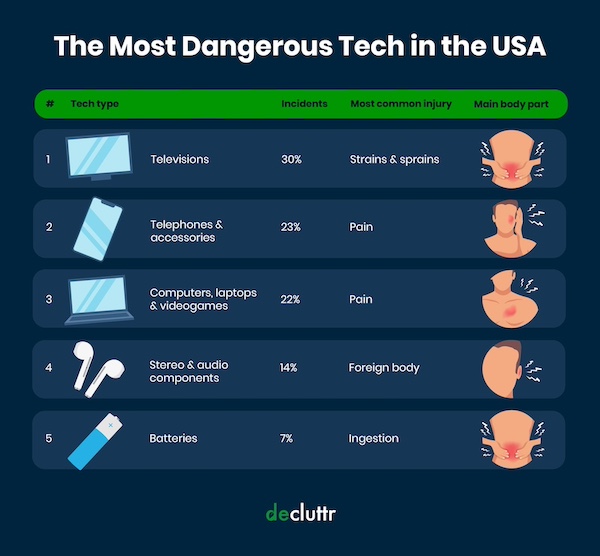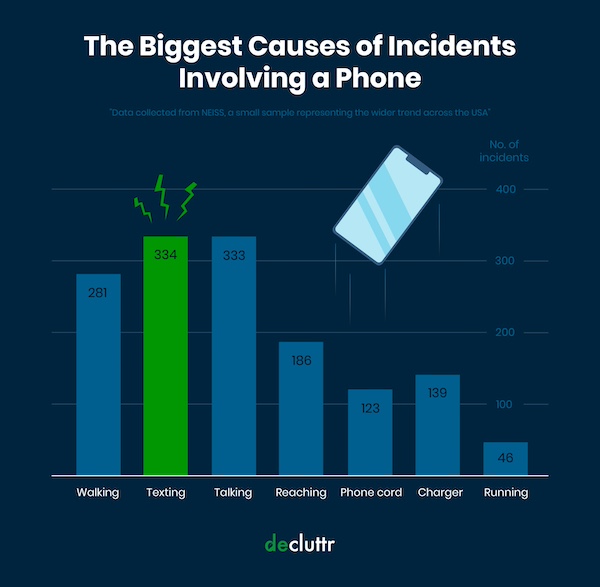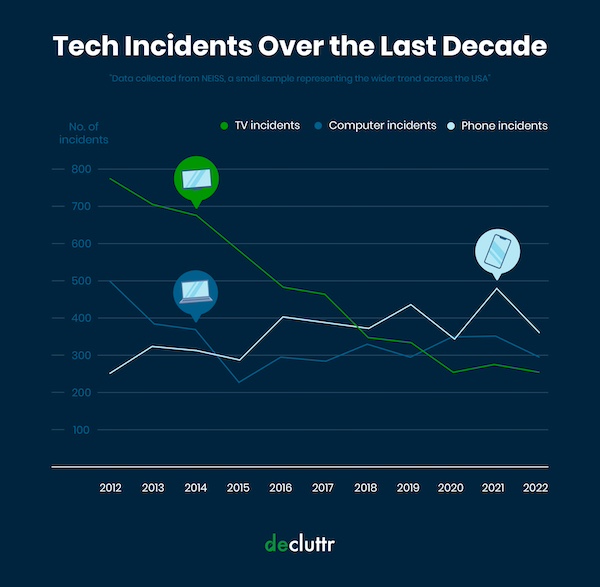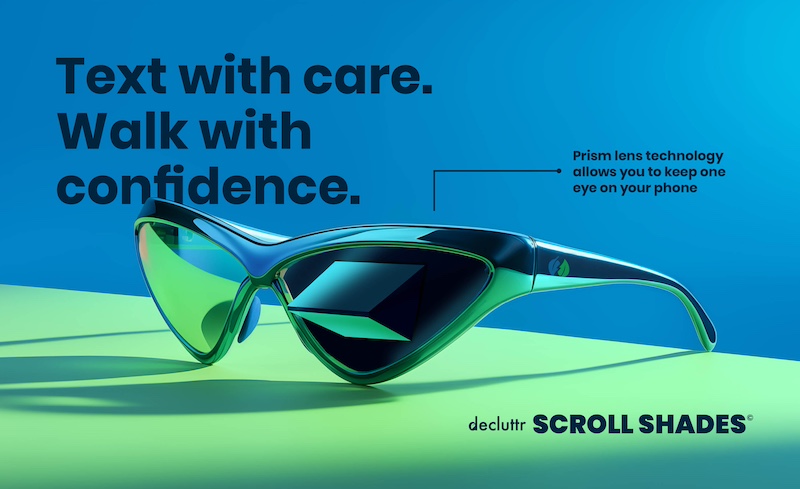On the whole, it's evident that TV related injuries, while historically the most dangerous tech in the USA, are on the decline. This decrease of -69% over the last decade is most likely due to TVs advancing and getting lighter as well as companies offering a service to install them properly.
Computers also began to see a decline between 2012 to 2015 of -45% before slowly increasing by 19% over the past seven years. Since 2015, diagnosis of “general pain” has increased by 49% affecting the upper body, head and hands. Meanwhile, incidents in 2015 primarily affected the foot. This is most likely due to lifestyle factors like working from home and poor posture increasing and the size of computers getting smaller over time.
The Rise Of Tech Neck
Our mobile phones are continuing to climb the dangerous tech rankings over the last decade, with related injuries increasing by 28% over the last decade.
More specifically, a staggering 22% of phone-related strains and sprains affect the neck (aka ‘tech neck’) as well as texting, talking and walking with phones being the primary reasons for injuries to the face and head.
Sprained and strained ankles (17%) and lower back (17%) are commonly the result of falls and trips when texting while walking.
The continuous rise of these incidents is concerning and we need to protect the faces and ankles of America. So, to put a stop to it, Decluttr has created the perfect accessory that will allow Americans to walk and text confidently without having to miss a step.
Introducing Scroll Shades: The Perfect Noughties Style Glasses, Protecting The Future Faces, Necks and Ankles Of America, Today!
In today's tech-infested world, while our devices have evolved rapidly, our bodies are struggling to keep up. It’s clear we need to do more to protect Americans.
Enter our game-changing solution: the "Scroll Shades."
At first glance, the "Scroll Shades" might appear to be a trendy pair of futuristic, sporty glasses, (perfect for millennials) but they're so much more. Designed with the modern tech user in mind, these glasses not only prevent the typical trip-and-text accidents, but they are also engineered using physics around light reflection to save your neck from the rigors of daily device use.
By subtly adjusting the wearer's line of sight, and bending the light through the prism, these shades promote a healthier neck posture, ensuring that you can enjoy your devices without the physical toll.
Crafted with precision, we are excited to present the first look of these innovative glasses.








